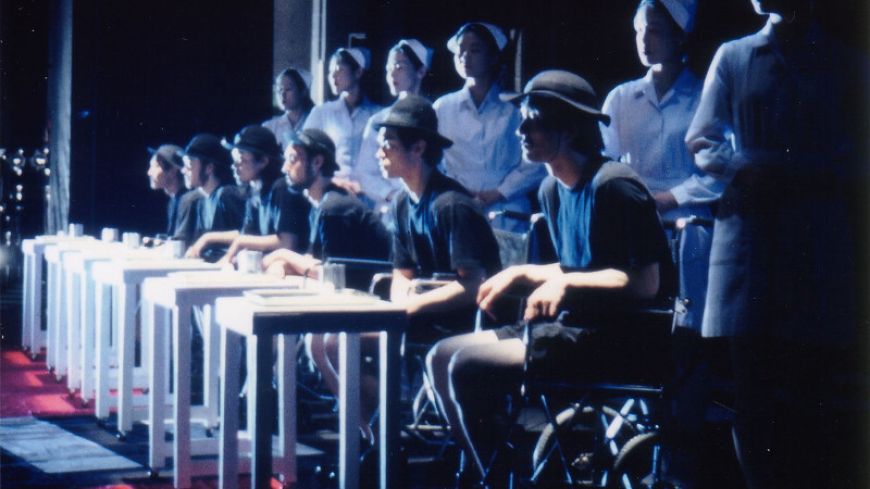
The story of Electra, so typical of the myths and legends of Ancient Greece, has murder and revenge at its core. When Electra’s father, Agamemnon, returns from the Trojan War he is murdered by his adulterous wife, Clytemnestra, and her lover, Aegisthus. Clytemnestra exiles her son, Orestes, and keeps Electra prisoner.
‘Waiting For Orestes: Electra’, is a powerful depiction of Electra’s seething inner turmoil, as she waits for her brother to return to avenge her father’s murder. Set in a psychiatric hospital, all the speaking characters are in wheelchairs. For the director, Tadashi Suzuki, the wheelchair is symbolic of psychological, not physical, disability. This follows from Suzuki’s understanding of ‘human beings as patients’ experiencing a ‘spiritual destitution’ from which there is no hope of recovery.
The piece begins with five men, naked to the waist and wearing bowler hats, performing a choreography of synchronised madness. At first they are silent but as their rate of movement increases they begin to make guttural noises. The percussionist, on stage throughout, produces sounds that augments and sustains the suspense.
Electra, motionless and mute in her wheelchair, gradually begins to physicalise the rage and resentment she feels. The five men, acting as the Greek Chorus, speak her thoughts, while she stares intensely straight ahead, with occasional animalistic sounds bursting out of her.
Clytemnestra is powerful, evil and troubled. If Electra could but see it, her mother is a warning of what she may become: unable to reconcile a dark deed performed and unable to find peace, she is ‘rotting alive’. When Orestes arrives and murders their mother, there is, as anticipated in this bleak saga, no joy and no relief.
The strangeness and intensity of this piece was as absorbing as it was disturbing. Spoken in Japanese, the English supertitles perhaps lost something in translation and were often incongruous, appearing banal compared to what we were witnessing on the stage. Being familiar with the story, this performance would have been even more enthralling without the distracting flow of text.
There is an interesting irony here in the fact that playwright von Hofmannsthal, whose Elektra of 1903 has been adapted here, often expressed a concern with the inadequacies of language. The power of this performance lay in the emotions expressed through tones of sound and intensity of movement, rather than the script itself. They could, and perhaps should, have been allowed to speak for themselves.
Ran from 11 – 13 Aug

